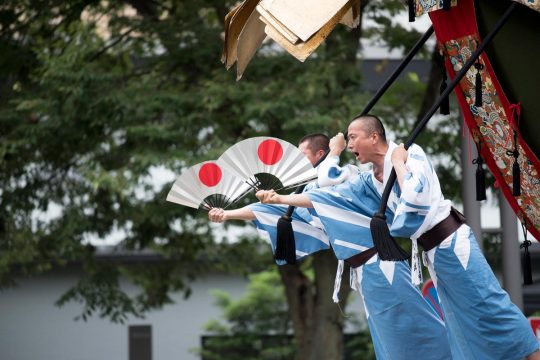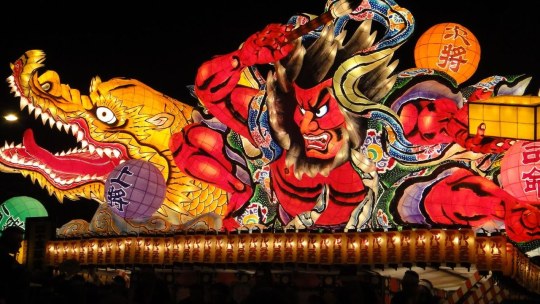#gallery-1 {
margin: auto;
}
#gallery-1 .gallery-item {
float: left;
margin-top: 10px;
text-align: center;
width: 100%;
}
#gallery-1 img {
border: 2px solid #cfcfcf;
}
#gallery-1 .gallery-caption {
margin-left: 0;
}
/* see gallery_shortcode() in wp-includes/media.php */
CRAFT: Summer Matsuri
Summer in Japan is festival season. And for a country that has more festivals (matsuri) than almost any other in the world, it’s difficult to know where to start.
To help guide you, here’s our pick of three of the best – expect vigorous chanting, enthusiastic dancing and larger-than-life omikoshi, or portable shrines.

1. Gion Matsuri, Kyoto
Perhaps Japan’s largest and best-known festival, Kyoto’s Gion Matsuri is steeped in history and floods the city with celebrations every summer during July. Festivities take place throughout the month, though the main event is held on July 17th with a spectacular parade of colourful floats called the Yamaboko Junko.
Filling the streets with noise and colour, the Yamaboko Junko parade is a feast for the eyes not to be missed. A breath-taking display of Japanese tradition, some of the intricately decorated hoko floats stand several stories high, packed full of festival participants in full traditional dress, pulled through the streets by huge teams of men.
During the three evenings preceding the parade, known as the yoiyama evenings, the streets of Gion are closed and packed with people enjoying delicious street food, live music and traditional performances. Head along to mingle with Kyoto residents enjoying the celebrations, and keep your eyes peeled for geisha and maiko who have also been known to join in the fun.
<iframe width=”632″ height=”346″ src=”https://www.youtube.com/embed/1zoWI7bbP9Q” title=”YouTube video player” frameborder=”0″ allow=”accelerometer; autoplay; clipboard-write; encrypted-media; gyroscope; picture-in-picture” allowfullscreen></iframe>

2. Nebuta Matsuri
Taking place in early August in the northern prefecture of Aomori, the Nebuta Matsuri is one of Japan’s most visually astonishing festivals. During the celebrations, Aomori city bursts into colour as vibrant lantern floats fill the streets. Taking up to a year to build, the impressive lanterns are made from Japanese washi paper and depict gods, warriors, kabuki characters and even celebrities.
Accompanying the lanterns, large groups of dancers and taiko drummers join the procession, which takes place each evening during the festival week, apart from the final day, when the parade is held in the afternoon.
All festival goers are welcome to join the procession, provided they wear traditional dress. So grab a costume and grab the chance to take part in a traditional Japanese matsuri.
Nebuta Matsuri, Aomor Cityi: 2nd – 7th August 2018
<iframe width=”632″ height=”346″ src=”https://www.youtube.com/embed/nXqKsZz13WU” title=”YouTube video player” frameborder=”0″ allow=”accelerometer; autoplay; clipboard-write; encrypted-media; gyroscope; picture-in-picture” allowfullscreen></iframe>

3. Awa Odori
In rural Tokushima on the island of Shikoku, the Awa Odori dance festival takes place in the mid-August heat and is renowned for being one of Japan’s liveliest matsuri. Dating back to the late 16th century, the festival originated as an all-night celebration at the opening of Tokushima castle. With its roots in revelry rather than religion, the focus of Awa Odori is very much on merriment, with bright costumes, energetic singing and one of the world’s biggest dance competitions.
Despite its more remote location, Awa Odori attracts more than a million visitors each year, and as one of Japan’s biggest parties, is well worth venturing off the beaten track for.
Awa Odori, Tokushima, Shikoku Island: August 12th – 15th 2018


